Movies which accurately portray esoteric topics
It has been a little while since I last posted, but I promised not to bore you with irrelevant subjects!
Hollywood isn’t known for its accurate portrayal of esoteric topics, and it is a rare movie which demonstrates true expertise. Most movies prefer to stun our senses with outrageous special effects, which anyone with experience of the higher worlds knows is simply not how those forces manifest themselves. Perhaps one notable exception was the British Move House Hammer, who in the 1960s and 1970s produced two movies based on stories by Dennis Wheatley, The Devil Rides Out and To The Devil – A Daughter. Both movies were clearly using a person with extensive knowledge about the subject matter.
A few weeks ago I subscribed to Netflix, already having access to Amazon Prime Movies. Over the past days I have locked myself away in a darkened room researching more modern takes on the subject, and in some cases was quite pleasantly surprised. So without further ado, here is my list of the top five depictions of the esoteric world in recent movies and series.
No 5: Exorcist – The Beginning (2004)
This movie was the 4th in the Exorcist series, and was reshot from Dominion, the first attempt, which was considered so bad a new producer was hired and the move completely redone. While most of the movie is not very good, there is one scene which is of interest to the student of the esoteric: when the doctor does a Tarot reading. As usual the doctor is a woman – since in movies no self-respecting man would ever dabble personally in the occult (for other examples, consider the swathe of Ouija Board movies currently in vogue, where it is invariably a girl who uses it). What is of particular interest here is the fact that the cards are not the usual ones, but have clearly been doctored for the movie, which, in some cases, actually works against the traditional meaning of the cards.
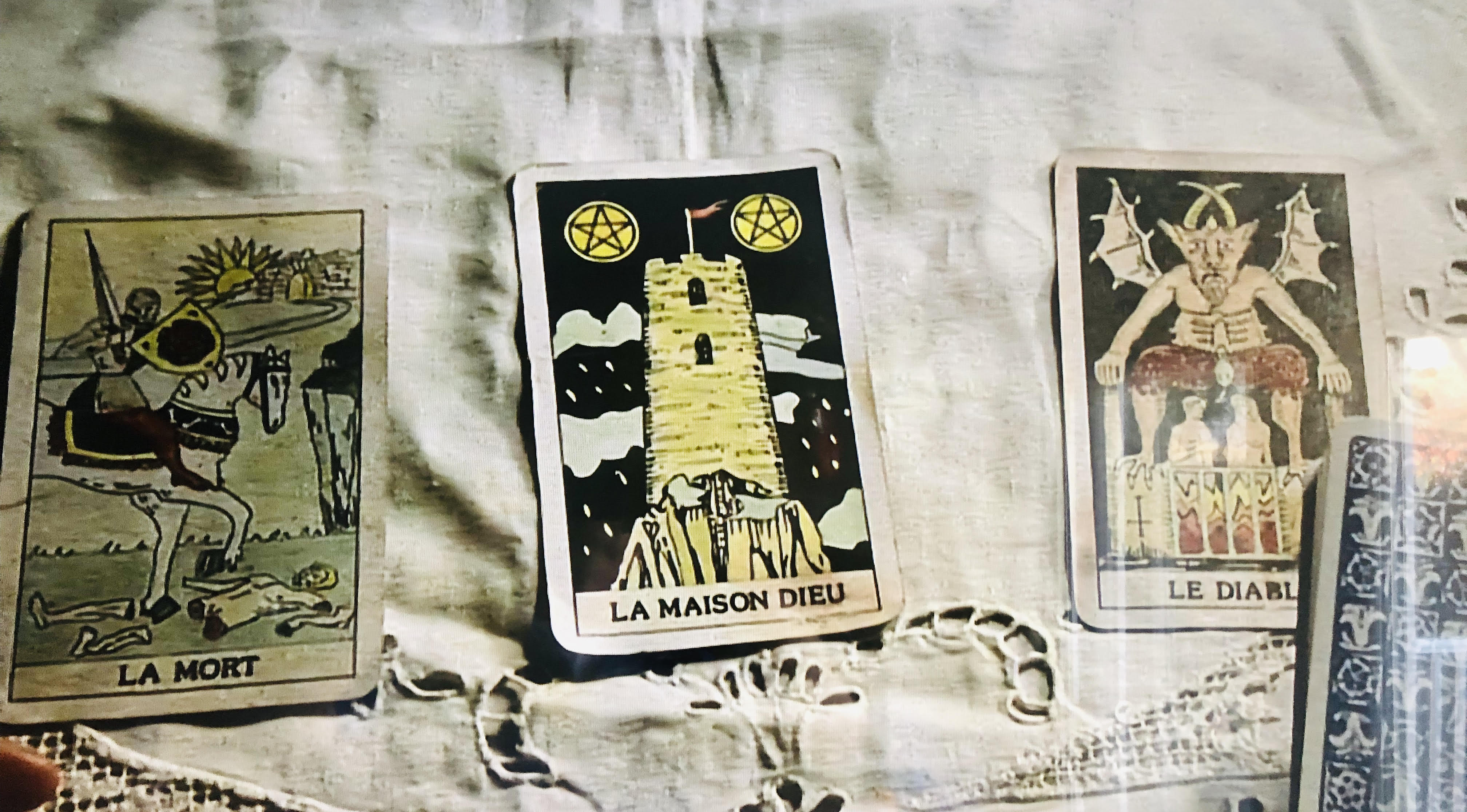
Firstly, Death (left card) portrays a far gorier body than is normally shown. This card also shows that the designs are based on the Rider Waite deck, since the devil is on horseback, whereas in earlier versions he is usually shown walking through a battlefield. Waite’s cliff, and an arch with the rising sun also feature in the background, perhaps in homage to the movie The Ninth Gate which came out five years earlier. The Tower (or The House of God, implying a church in French) leaves out the lightning strike, the broken crown and the falling people. Finally, the Devil includes two inverted crosses, which brings a Christian element into a card which usually contains no such link.
Perhaps the cards were changed to incorporate some elements of the movie, such as the inverted cross in the underground church; the battlefield strew with mangled corpses following the battle, and the perfectly intact church (rather than a crumbling tower). Despite this, it is unusual for a Director to restrict him- or herself to using cards which are relevant to the plot, instead of adding the inevitable Hanged Man and Ten of Swords, which are staples in movie Tarot readings simply for their ‘shock horror’ value. For that the movie is to be commended on its accurate 3 Card Spread. As for modifying the cards to suit the movie – well, they wouldn’t be the first people to do something like that. If you study the Tarot cards put out by Builders of the Adytum (B.O.T.A.), you will see that they have added a lot of extra symbolism to the original Rider Waite deck, in order to pack yet more associations into the deck…
No 4: As Above So Below (2014)
This movie follows the fortunes – or deaths – of a group of intrepid students traveling through the catacombs beneath Paris, in search of the Philosopher’s Stone of Nicholas Flamel. While the storyline itself is generally predictable, the initial shout outs to Tomb Raider and the Da Vinci Code and quickly replaced with something altogether more sinister, and the premise of the story actually has some impressive moments, which reflect an understanding of alchemy and esoteric philosophy. Indeed, there are a number of unsettling images in the movie and the usual selection of horror movie deaths. However, there are also some interesting ideas, including the discovery of a ‘reversed’ room, a manifestation of the ‘as above so below’ theme, and even the idea that the heroine is herself the Philosopher’s Stone – showing that somebody on the set had given thought to the idea of spiritual alchemy and the transmutation of the individual. The movie also contains a number of symbols familiar to those who study alchemy, including V.I.T.R.I.O.L. and the presence of hexagrams, which for once the heroine, being familiar with her father’s studies, can explain for once, instead of gawping dumbly at them, which is normally what happens in these kind of movies.
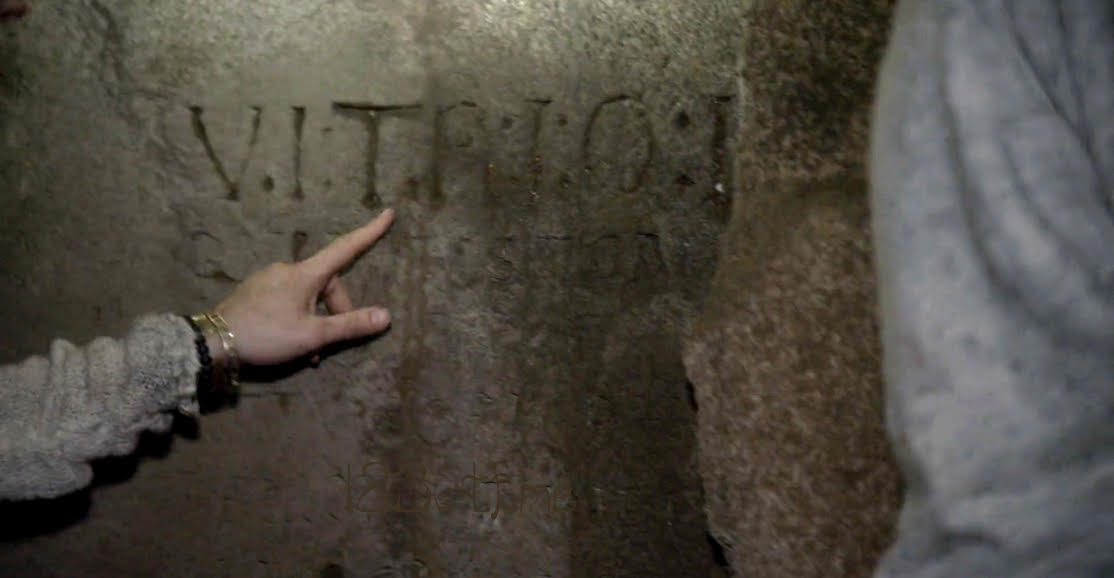
No 3: Requiem (2018)
This made for TV BBC series follows the fortunes of a professional cellist who, following her mother’s spectacular suicide in front of her, discovers information linking her mother to the mysterious disappearance of a child in Wales many years earlier, and ultimately leads her to question her own identity and past. This allows her to travel to Wales, providing a perfect brooding and dismal background to the unfolding story. Everything from murder, child abduction, visions of the ghost of the heroine’s mother, sinister powers, the illegal growing of marihuana and cattle mutilation is brought into play, which gives Requiem a somewhat rambling storyline, and tends to pad out the episodes with red herrings and side-stories. Another odd touch is the fact that the heroine is portrayed as a rather unpleasant and self-absorbed bitch, who is so focused on herself and her own needs that she is oblivious to the hurt and damage she is causing to her friends, and indeed to anyone who crosses her path, making it difficult to care very much what happens to her (although there is a reason for this, revealed at the end)! However, the ultimate premise, that a group of well-respected village leaders are behind a diabolical plot, comes right out of the best Hammer Horror Movie scripts. The reason it earns a place in this list is the fact that the murderous protagonists are trying to summon an archangel, of all things, believing they can control it and use it to bring them all the usual material things – wealth, power, position. The odd thing about the movie is that the ‘mystery symbol’ which appears with increasing frequency throughout is John Dee’s Monad: but while this was historically linked to the summoning of angels, no Enochian is used and none of the objects used by John Dee and his Seers feature in the story. Instead, in a moment reminiscent of Hallowe’en III: Season of the Witch, the heroine is sent into a sort of well (think The Ring) containing some kind of prehistoric entity, which proceeds to occupy her in a manner similar to Werewolf movies, replete with the unpleasant sound of cracking bones. Then she floats. Then her eyes turn black. No special effect left unturned. The inexplicable thing is: why would an evil coven summon an archangel and expect to control it (apparently with a few New Age accoutrements, like sage, lavender and semi-precious stones!). Oh, and they wear priestly stoles, the obligatory wear for all archangel summoners. The assumption seems to be that archangels are both morally ambivalent, and not under God’s control. A second series is being considered, along the lines of I Was A Teenage Archangel, I suppose…
But despite the cynical comments, the series if certainly thought-provoking, and provides us with a more realistic attempt to portray human interaction with more powerful forces.
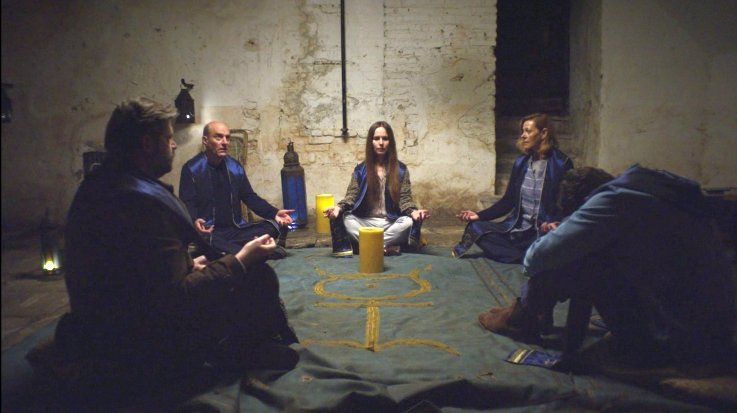
No. 2: Hereditary (2018)
Intriguingly this movie was a favorite of the critics, but underappreciated by general audiences, scoring on average a D+ on a scale from A (high) to E (low). Perhaps this is an indication that the movie was trying to convey a more realistic view of true magical operations, although the last few minutes would rival the goriest horror movie or the head-swiveling or spider-walking moments from The Exorcist! Still, with so many sites purporting to explain the last five minute of Hereditary, this tells us that the key point of the movie is going to be lost on the majority of moviegoers…
This is another movie where it is hard to like any of the main characters. The mother is hard and unforgiving. The daughter, played by Milly Shapiro, is terrifying and hard to watch. Perhaps the only sympathetic person is Peter, the son, who is expected to drag his younger, dysfunctional sister around with him everywhere he goes. A momentary lapse in concentration on his part leads to tragedy, and his mother makes sure he is not allowed to forget it for one instant. However, what would otherwise be a story about a typically dysfunctional family takes an increasingly alarming direction as the mother seeks solace in a new friend she met as grief counselling, who shows her how to conduct a séance in order to contact her daughter. From this point on a movie which has no humor takes a very dark turn indeed, and while the effects become increasingly gruesome and ‘Hollywood’ as the movie moves towards it terrifying conclusion, in this instance it seems to work.
However, the real reason for recommending this brutal movie is its subject matter. It turns out that the matriarch, whose death begins the movie, was a member of a cult dedicated to black magic, who were attempting to invoke the demon Paimon. In this instance the advisers knew exactly what they were doing, and from the necklace at the beginning of the movie (his sigil) to the terrifying conclusion, we are given increasingly overt hints at what is happening as the movie progresses, while seemingly random tragic events are shown to have both a purpose and a plan behind them. Paimon is the 9th Spirit listed in the Lemegeton, and appears as a man wearing a crown, another theme in the movie. HIs powers, as a denizen of the Qlippoth, is that of granting any wish to the magician or magicians who summon him, and this is clearly why he was the focus of the cult’s work. Perhaps the only liberty taken is the fact that the movie has him needing to possess a human body, which is certainly not a requirement in the Lemegeton, nor when Solomon allegedly commande him, along with his peers, to assist in the building of the Temple in Jerusalem, as tradition would have us believe. Certainly worth watching, with the added bonus that the movie should be available free on Netflix in a couple of weeks, and is already available on Amazon Prime for only 99 cents.
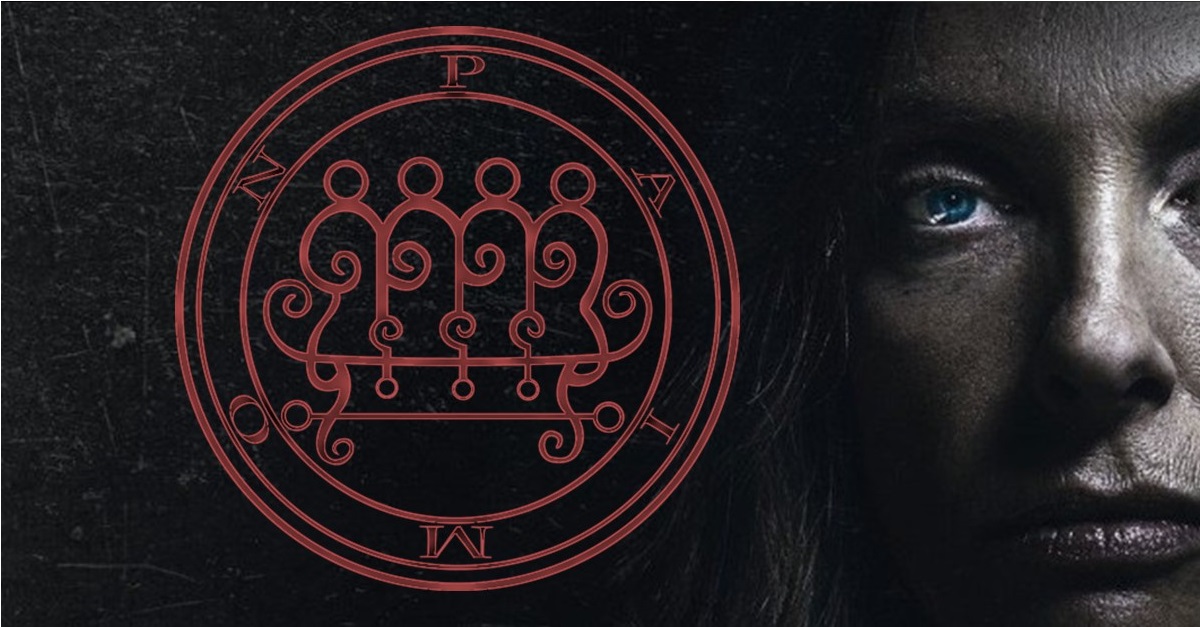
No. 1: A Dark Song (2017)
While the previous movies contains strongly esoteric themes which are either incidental to or a main thread in the movies, this movie is unashamedly about one subject only: the Book of Abramelin.
Only it’s not, in the strictest sense: while we cannot know whether the screenwriter was trying to create a smokescreen of the “don’t try this at home, kids” variety, or to give the impression that the occultist was familiar enough with the ritual to have adapted it to his own purpose – a possibility suggested by the fact that he uses a personal hand-written book reminiscent of the Book of Shadows rather than, say, a printed version by Mathers or Crowley – elements of other rituals are introduced, including a rather jarring moment when he writes Japanese symbols on her body. But despite this, the essential discipline and self-sacrifice of the Rite of Abramelin is most convincingly conveyed.
The movie is set – yet again – among the brooding mountains and perennially gloomy weather of Wales, which seems to be a popular gambit nowadays. It opens with a quotation from Psalm 91: “For he shall give his angels charge over thee, to keep thee in all thy ways.” A woman rents a remote cottage and secures the services of a bad-tempered esotericist to lead her through the grueling operation which will lead to the appearance of her Holy Guardian Angel, who she hopes will grant her wish to speak to her deceased child one last time.
The setting is bleak, in that almost the entire movie focuses on the two-hander relationship between the grieving mother and the gruff esotericist, set in a cottage isolated from the world by a salt circle around it, with the occultist telling her that they would be put in mortal danger if either of them crossed it. The tension is palpable, and the woman is made to endure hardship and extreme privation during the month’s long ritual prescribed by the Book. However, while their relationship is examined in detail, it never detracts from the true story, which is the pursuit of a months-long magical operation to attain a specific goal, and the movie gives a very genuine impression of the difficulty in performing such work over a long period of time, from the temptations to give in, the hardships endured, the moments of personal crisis, or doubt, and the need to persevere against all apparent odds. One indication that the writer knows his stuff is the fact that the effects, when they manifest, are slight, but enough to prove that the path being followed is the correct one. Anyone who has embarked on the Rite of Abramelin or a similar ritual will immediately identify with the scenes in which spangles or sounds appear from apparently nowhere (see the image at the top of this blog), a manifestation known to adepts of the Elus Cohen, the Hermetic Order of the Golden Dawn and any Orders similarly seeking communication with the Holy Guardian Angel or a similar being.
Despite the woman’s initial motivation to seek revenge, by the movie’s end she understands that she must be motivated by love rather than hate, and this allows her to gain the most important lesson of all. But before the ending, she must face her own Long Dark Night Of The Soul, and at the very moment of success she is seduced away by the dark side, which puts on a final show of strength in her weakened state, before she is finally rescued in what must be one of the most amazing scenes in any movie for anyone who had gone through this ritual or something similar. I can only beg any person who had not seen the movie to hold off doing any searched on the internet, or – worse – looking up any images from the movie before watching it. While all our experiences of performing this or any similar ritual will be a little different, I can guarantee that you will be absolutely stunned by the imagery and how close it is to the real thing, unlike just about any other moved made on this or a similar subject. Once seen, I couldn’t get it out of my head for days, and I am sure you will feel the same. I came away with the sure belief that whoever was responsible for those final scenes had both done the work and achieved the results.
Of course there are dramatic elements to the movie – it has to make money, and most people who see it will be less interested in the subtle manifestations of success than the nudity, violence and death. But, for those who understand exactly what the movie is about, it will be some time before we see a movie which is so faithful, so close to the real experience of performing such rituals.
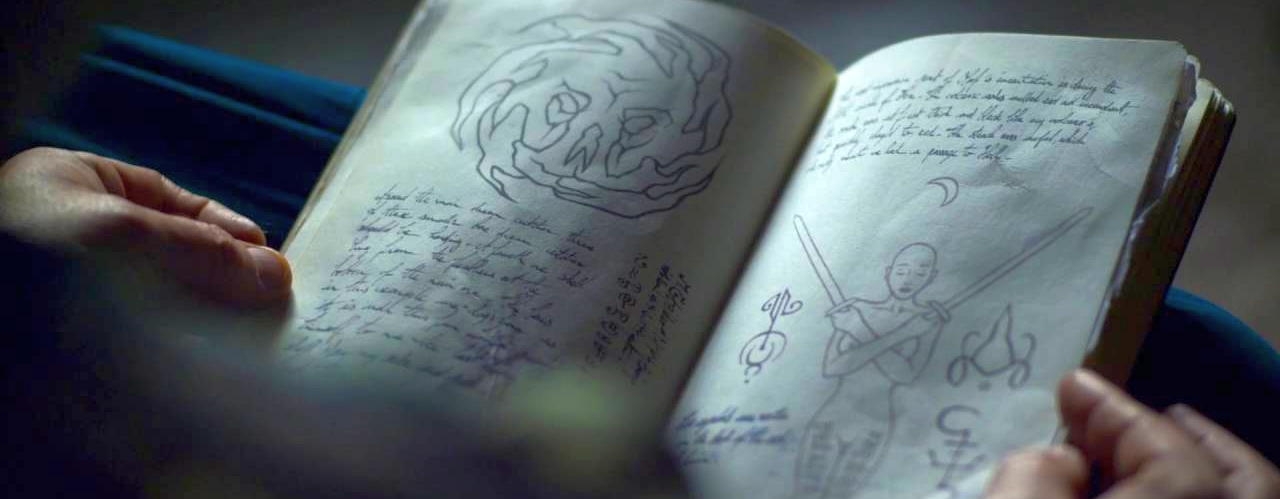
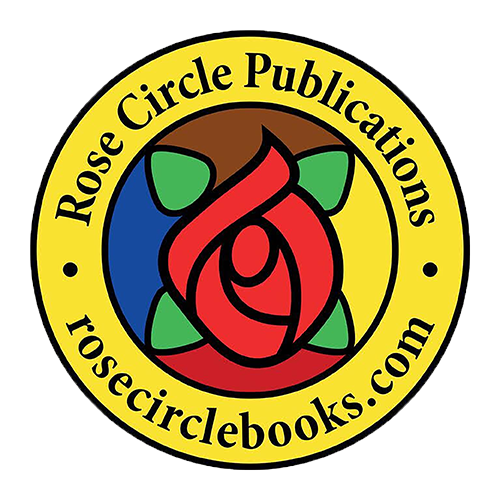
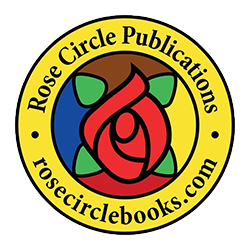
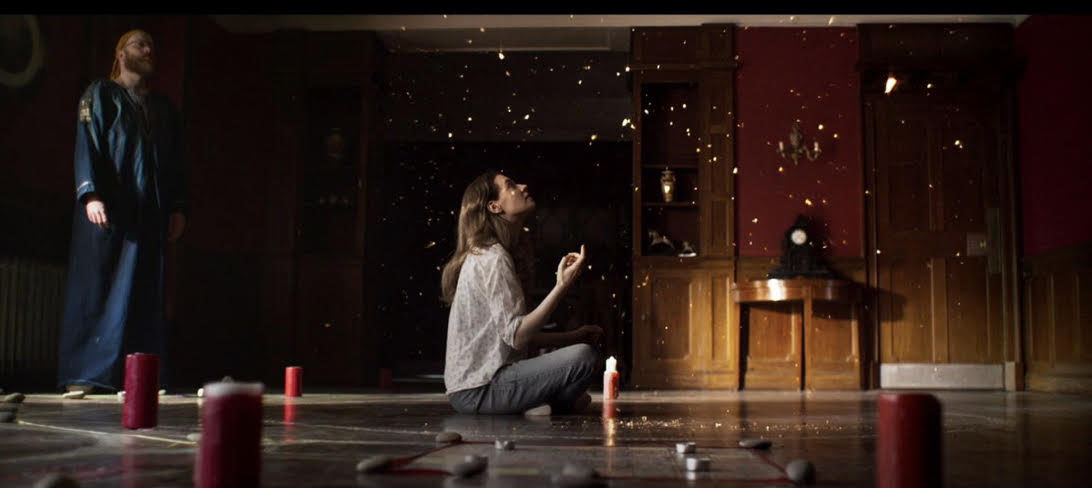
Interesting analysis on all 5 movies. I enjoyed Hereditary and A Dark Song. Great movies. I will make it a point to see the others as well.
I would love to hear your thoughts on another favorite,Penny Dreadful. I know its accuracy is far from center but, nevertheless, I’m sure you could shed some light on some scenes.
I also liked the recent TV series DEVS, and the older movies Sin Eater and Revelation.